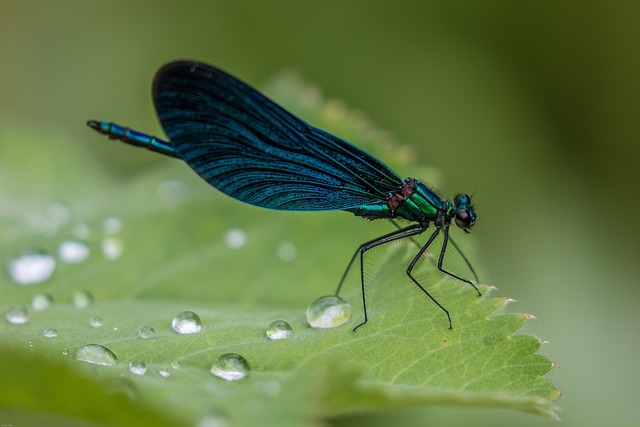Professional psocid removal focuses on eco-friendly techniques to eliminate book lice (psocids) humanely, addressing moisture issues and other pest infestations for long-term prevention. Methods include natural repellents like neem oil, heat treatments, and specialized vacuum systems, avoiding harsh chemicals. Integrated Pest Management (IPM), with biological controls and regular inspections, promotes responsible pest management while ensuring effective control and protecting ecosystem health.
Psocids, often overlooked, can wreak havoc on structures and fabrics. This article guides you through eco-friendly solutions for safe psocid removal, a growing priority in today’s conscious world. We explore traditional methods and their drawbacks, highlighting the effectiveness of eco-solutions for professional psocid control. Learn about best practices and implementation tips to achieve eco-conscious management without compromising on results. Discover how to tackle these pesky invaders while preserving the environment.
Understanding Psocids: Their Nature and Impact
Psocids, or book lice, are tiny insects that can be a significant nuisance in both residential and commercial settings. Despite their name, they’re not related to lice and primarily feed on organic matter, including dead skin cells, plant matter, and starchy materials. While they are often harmless to humans, their presence can signal larger issues with moisture or infestations of other pests. In professional psocid removal, understanding these insects’ behavior is crucial for effective and safe mitigation.
Their small size allows them to thrive in hidden areas like cracks, crevices, and carpet fibers, making them hard to detect until they’ve established a substantial population. The impact of an infestation can range from causing discomfort to damaging property and furnishings. Professional psocid removal services employ specialized techniques and eco-friendly solutions to eradicate these pests humanely, focusing on the root causes rather than just symptoms for long-lasting results.
Traditional vs. Eco-Friendly Removal Methods
In the realm of pest control, the traditional approach often involves chemical-laden solutions that can have adverse effects on both the environment and human health. However, with growing awareness of sustainable practices, there’s a shift towards eco-friendly alternatives for professional psocid removal. These methods prioritize natural, non-toxic substances and techniques to manage and eliminate psocids (or book lice) without compromising ecological balance.
Eco-friendly removal methods not only benefit the surroundings but also offer long-term solutions by addressing the root causes of psocid infestations. Instead of quick fixes, these strategies focus on prevention and natural control, ensuring a safer and more harmonious coexistence between humans, pets, and the outdoors.
Safe and Effective Eco-Solutions for Professional Psocid Control
When it comes to professional psocid removal, eco-friendly solutions offer a safe and sustainable approach for both businesses and homes. Traditional methods often rely on harsh chemicals that can be harmful to both people and the environment. Fortunately, there are several effective alternatives that have proven successful in controlling psocid populations without compromising health or causing ecological damage.
These eco-solutions range from natural repellents like neem oil and essential oils to innovative technologies such as heat treatments and specialized vacuum systems. For instance, neem oil, derived from the neem tree, acts as a natural insecticide, deterring psocids with its distinct aroma while remaining non-toxic to humans and pets. Similarly, heat treatments use controlled temperatures to eliminate psocids, ensuring a thorough and safe removal process.
Implementation and Best Practices for Eco-Conscious Psocid Management
In the realm of professional psocid removal, implementing eco-friendly solutions doesn’t diminish the effectiveness of control measures but rather aligns with a responsible and sustainable approach to pest management. The key lies in adopting best practices that prioritize non-toxic methods, such as integrated pest management (IPM). IPM integrates various strategies like biological controls (e.g., introducing natural predators), mechanical means (e.g., vacuuming or physical removal of infested items), and targeted applications of organic pesticides as a last resort. By combining these tactics, professionals can achieve successful psocid control while minimizing environmental impact.
For optimal eco-conscious psocid management, professionals should start with thorough inspections to identify the extent of the infestation and potential entry points. Regular monitoring and early detection are crucial in preventing widespread contamination. Additionally, maintaining excellent hygiene practices, such as regular cleaning and sanitizing, can deter psocids naturally. When using any control measures, it’s essential to follow label instructions strictly, use personal protective equipment, and opt for products with lower environmental toxicity. Such practices not only ensure the safety of residents but also contribute to a healthier ecosystem.
In conclusion, while understanding psocids’ nature is crucial for effective management, it’s equally important to adopt eco-friendly solutions for safe and sustainable professional psocid removal. By opting for green methods, we can mitigate environmental impact while achieving optimal control. Implementing these eco-conscious practices ensures a healthier ecosystem and provides long-lasting protection against psocids, making it a responsible and effective approach to pest management.
